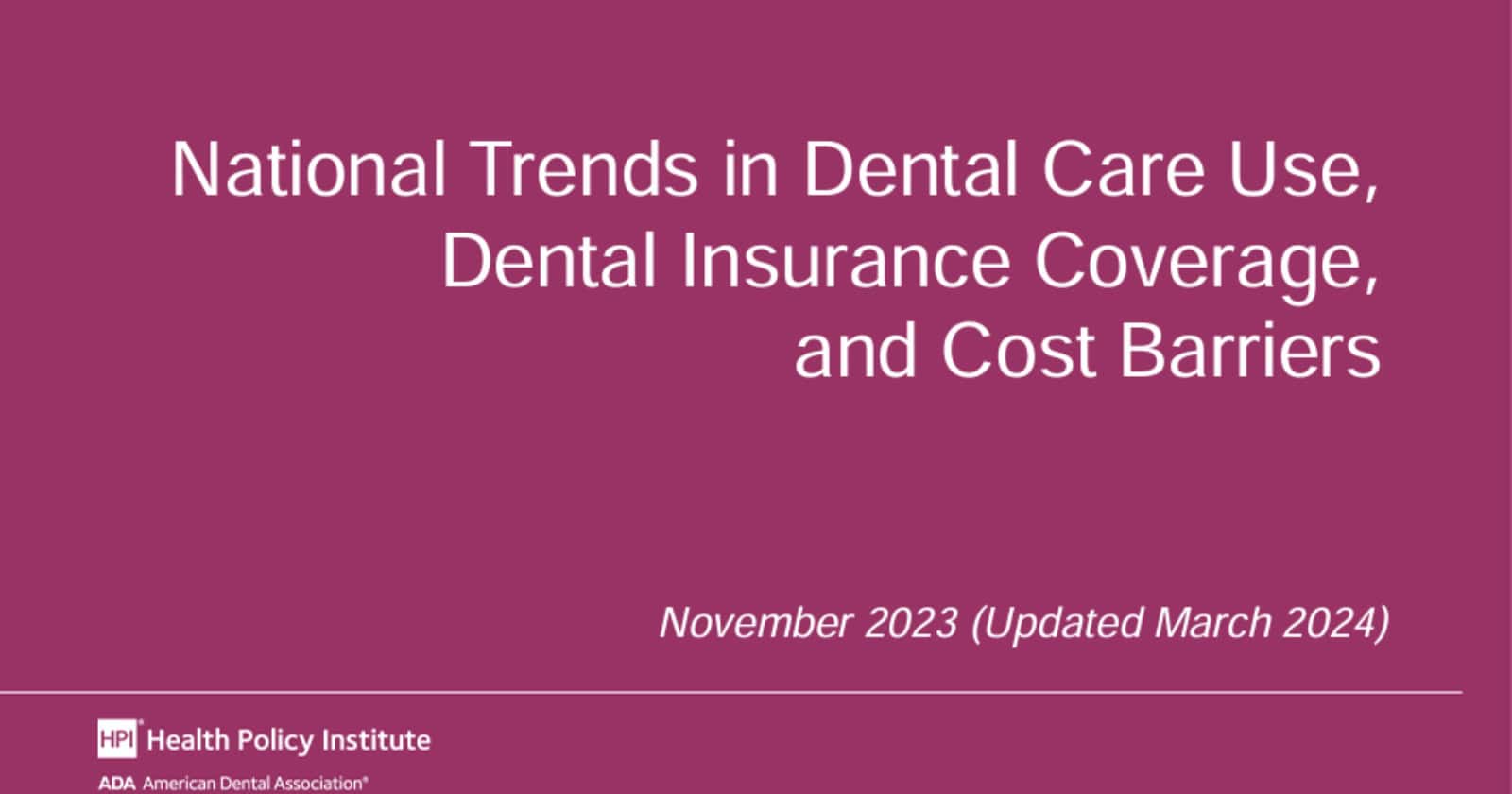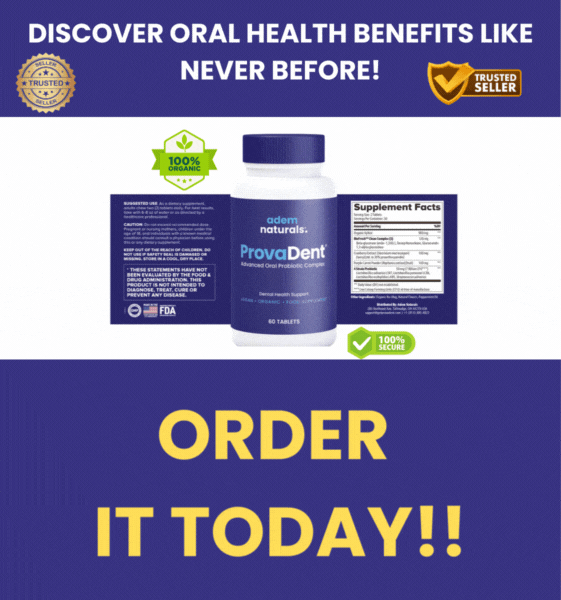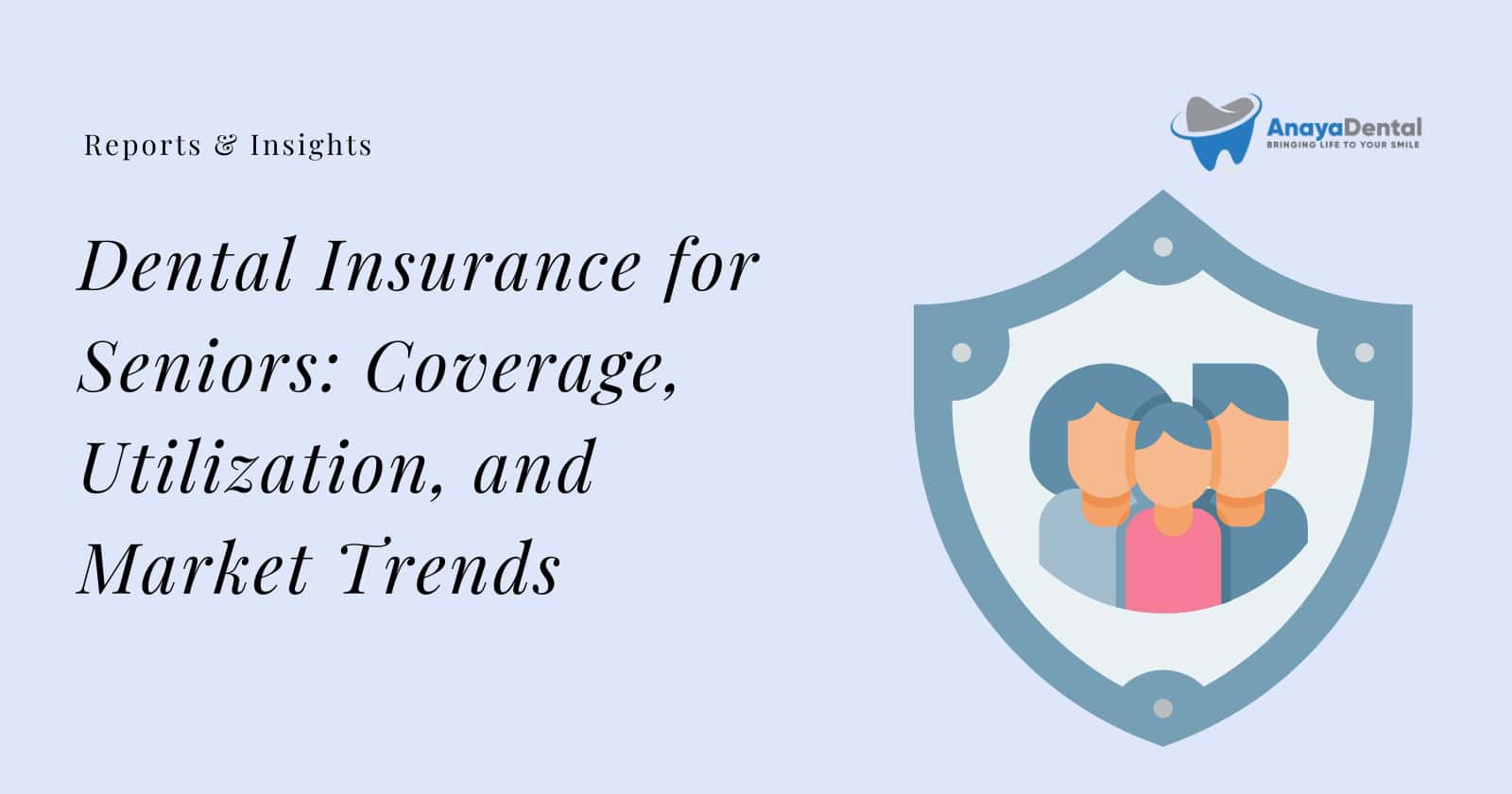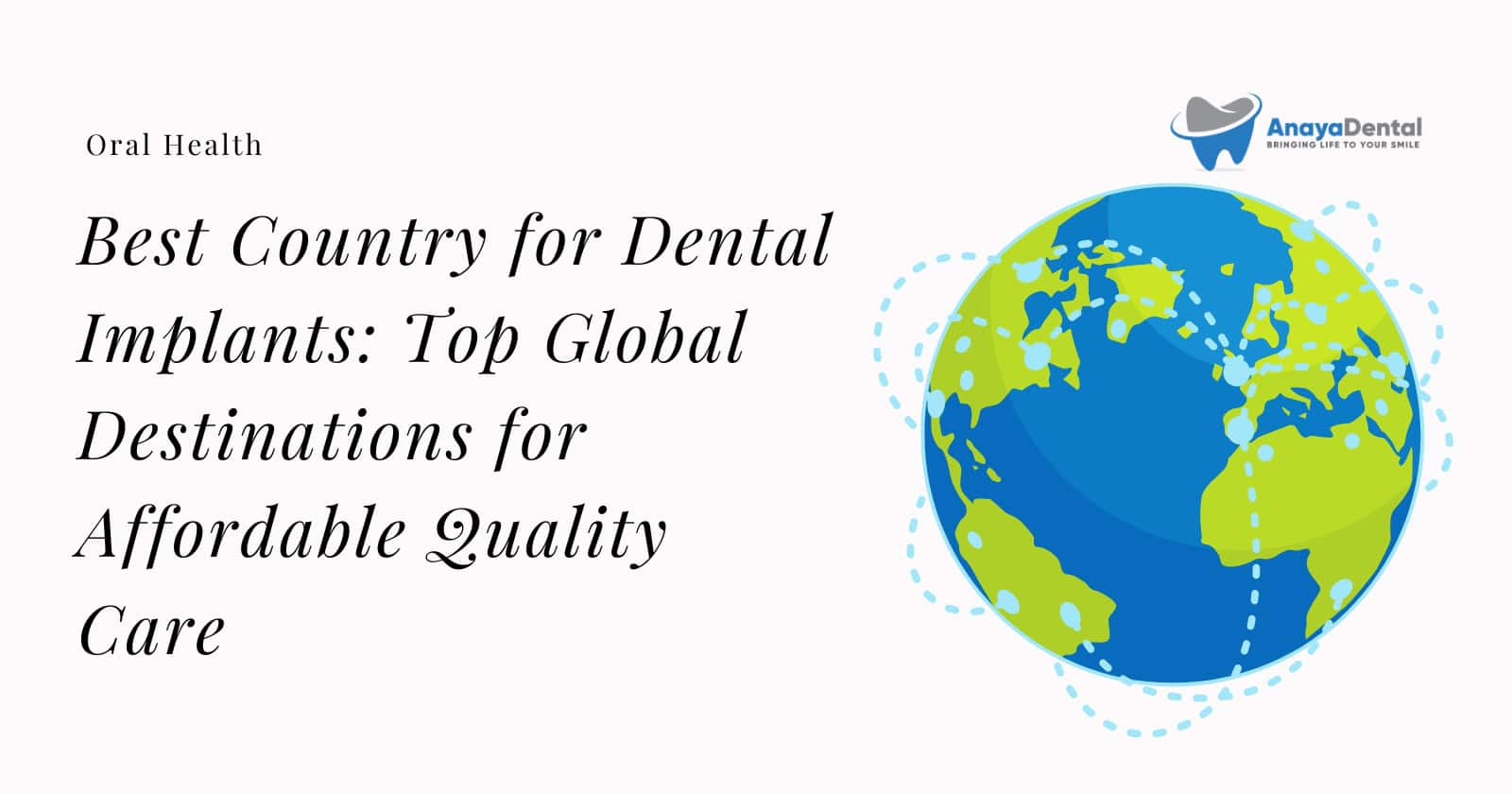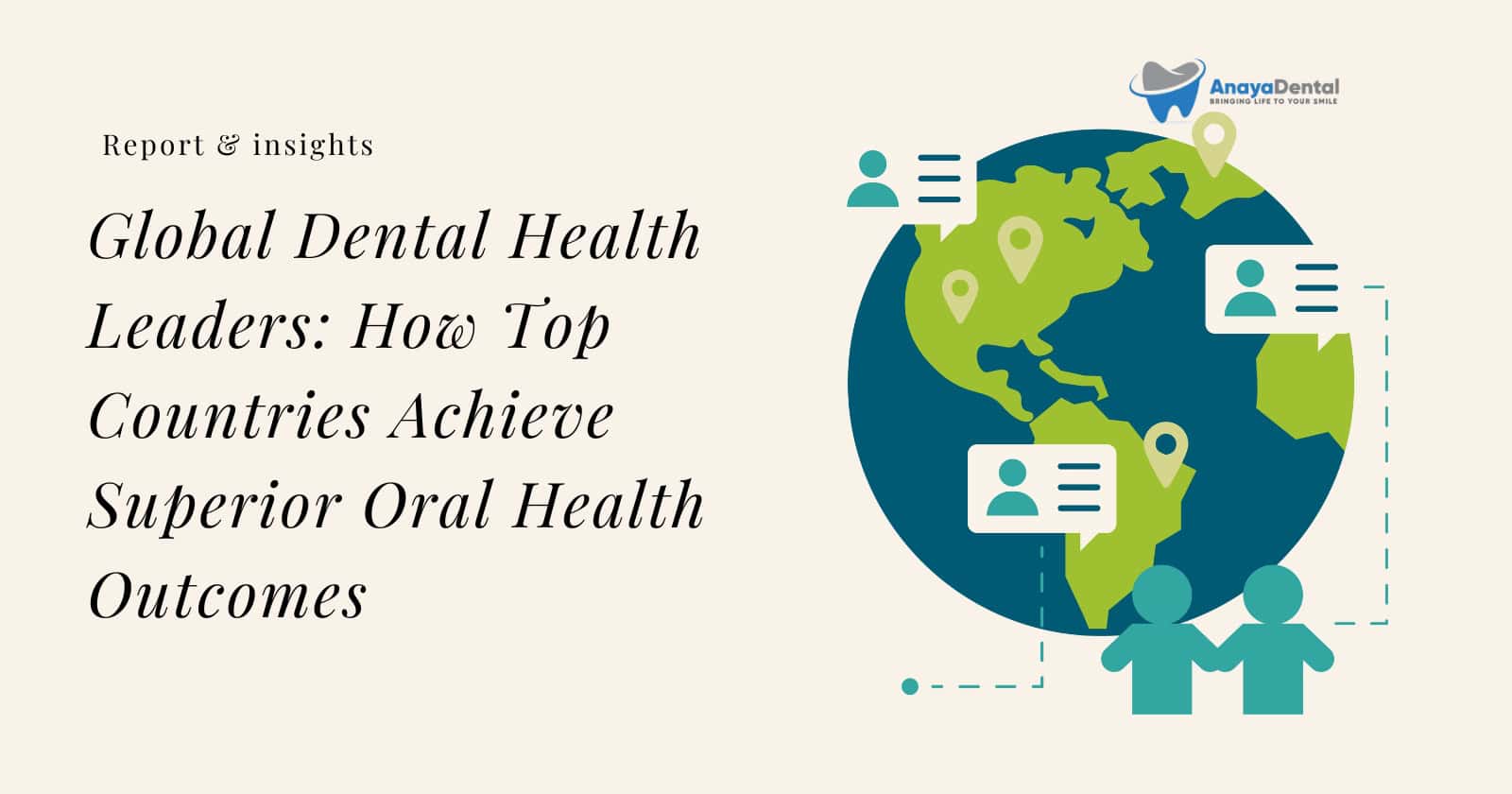Dental health is integral to overall well-being, yet access to quality dental care remains strikingly unequal across the United States. Recent data uncovers significant disparities based on race/ethnicity and income, revealing that specific populations are disproportionately “left behind” in maintaining optimal oral health.
Key Points of the Research at a glance:
- A Two-Tiered System: America’s dental care isn’t a unified system, but rather a reflection of deep societal fault lines. While some enjoy access to cutting-edge treatments and preventative care, a significant portion of the population is effectively shut out, creating a two-tiered system where oral health outcomes are predetermined by factors like race and income.
- The Color of Your Teeth Depends on the Color of Your Skin: Racial and ethnic minorities aren’t just facing hurdles; they’re navigating a maze of systemic barriers. The data starkly reveals that Black and Hispanic Americans are significantly less likely to receive dental care, turning a blind eye to this reality perpetuates a cycle of inequity.
- Poverty’s Bitter Pill: Income isn’t just a number; it’s a gatekeeper to essential healthcare. The chasm between the haves and have-nots in dental care is alarming, with low-income individuals consistently being denied the care they need. This isn’t just about teeth; it’s about social mobility, economic opportunity, and basic human dignity.
- Cost as the Ultimate Barrier: For millions, the price tag on dental procedures isn’t just a deterrent; it’s an insurmountable wall. The fact that so many Americans forgo dental care due to cost isn’t a mere inconvenience; it’s a public health crisis in the making.
- Insurance: A Safety Net with Holes: While private dental insurance offers a degree of protection, it’s not a panacea. The disparities in cost barriers among those with different types of insurance highlight the inadequacies of the current system and the urgent need for more comprehensive and equitable coverage.
- Neglect’s Ripple Effect: Untreated dental problems aren’t isolated incidents; they’re ticking time bombs that can detonate into serious health complications. The links between poor oral health and chronic diseases underscore the urgent need to address dental disparities not just as a matter of oral hygiene, but as a crucial component of overall healthcare.
- A Glimmer of Hope: Despite the bleak landscape, progress is possible. The decline in uninsured children demonstrates that targeted interventions can yield positive results, providing a roadmap for future policy changes and community-driven initiatives.
- Oral Health’s Economic Impact: Oral diseases cost the world $710 billion annually. The figures show the significant economic relevance of oral, dental and jaw diseases and demonstrate the enormous economic burden on individuals and society.
- Biden Rule: Under Biden’s rule, states have until 2025 to decide whether to mandate that insurers cover dental benefits for adults. The dental benefits would not take effect until 2027.
- The System is Ill-Equipped: Americans experience dental emergencies every year and the U.S. health care system is ill-equipped to help them.
- Rural Shortages: Two-thirds of rural communities nationwide are designated as having a shortage of dental professionals.
The Big Picture: A Skewed Landscape of Access
In 2021, an estimated 43% of the U.S. population visited a dentist. However, this overall figure obscures considerable variation among different groups. It’s crucial to note that this percentage should be viewed as a slight underestimate due to the methodology used in the Medical Expenditure Panel Survey (MEPS).
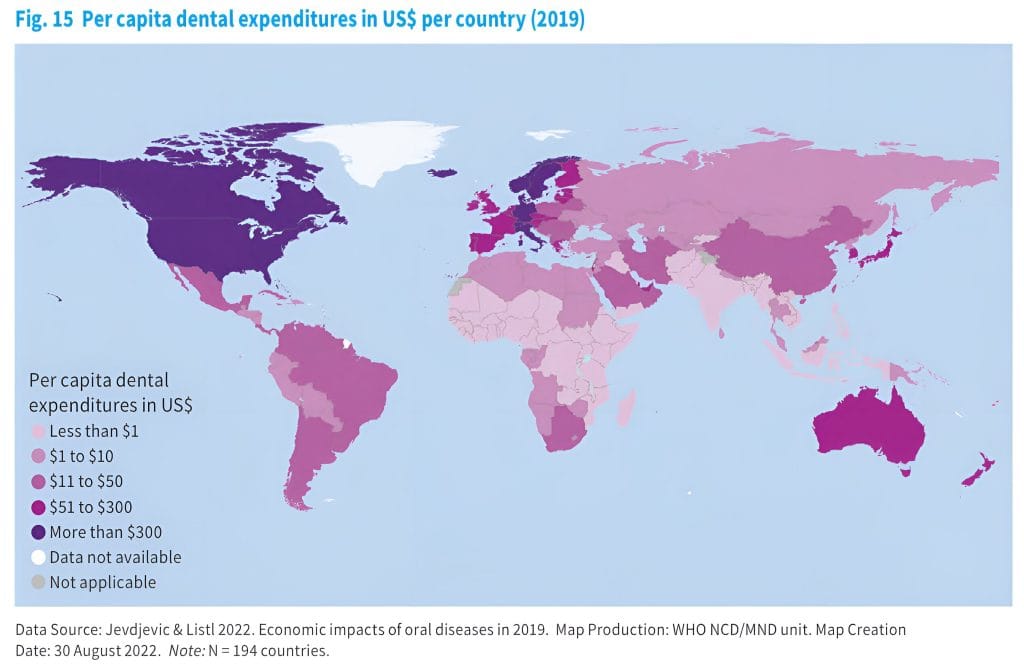
Race and Ethnicity: A Stark Divide in Dental Care Use

Dental care utilisation varies significantly among racial and ethnic groups:
Try Our Dental Calculators
- White individuals: Are more likely to access dental services. In 2021, 51.2% of White individuals had a dental visit.
- Black individuals: Face significant barriers, with only 32.3% accessing dental care in 2021.
- Hispanic individuals: Experience even greater challenges, as only 28.9% had a dental visit in 2021.
- Asian individuals: Show a slightly higher rate than Black and Hispanic populations, with 37.6% having a dental visit in 2021.
These disparities persist across age groups:
- Children (Ages 0-18) in 2021:
- White: 58.0%
- Black: 42.8%
- Hispanic: 39.8%
- Asian: 43.6%
- Adults (Ages 19-64) in 2021:
- White: 47.1%
- Black: 28.3%
- Hispanic: 23.0%
- Asian: 34.8%
- Seniors (Ages 65+) in 2021:
- White: 56.0%
- Black: 30.2%
- Hispanic: 30.3%
- Asian: 41.4%
The Heavy Burden of Cost Barriers by Race/Ethnicity
Across all age groups, Hispanic individuals face the highest cost barriers to dental care. However, it’s crucial to acknowledge that data on cost barriers are not directly comparable before and after 2019 due to changes in the survey methodology used by the National Health Interview Survey (NHIS).

Income Inequality: The Poverty Gap in Dental Access

Income level significantly impacts access to dental care. Individuals with higher incomes are more likely to receive dental care than those with lower incomes:
- All Ages in 2021:
- <100% Federal Poverty Level (FPL): 26.0%
- 100-200% FPL: 30.6%
- 200-400% FPL: 39.1%
- >400% FPL: 55.3%
- Children (Ages 0-18) in 2021:
- <100% FPL: 35.0%
- 100-200% FPL: 40.2%
- 200-400% FPL: 49.5%
- >400% FPL: 61.7%
- Adults (Ages 19-64) in 2021:
- <100% FPL: 19.7%
- 100-200% FPL: 24.9%
- 200-400% FPL: 32.5%
- >400% FPL: 50.7%
- Seniors (Ages 65+) in 2021:
- <100% FPL: 29.7%
- 100-200% FPL: 31.9%
- 200-400% FPL: 47.4%
- >400% FPL: 64.7%
Cost Barriers: A Harsh Reality
13% of the population reported that they did not obtain needed dental care services due to cost. This is far more severe than cost-related barriers for medical care (3.2%), prescriptions (16.8%), and mental health services (11.2%).

The Protective Effect of Private Dental Insurance
Individuals with private dental insurance encounter the lowest cost barriers compared to those with public dental insurance or no insurance.

Why Does This Matter? The Grave Consequences of Neglect
Untreated dental problems can trigger pain, infections, and difficulties in eating and speaking. Poor oral health is also linked to chronic conditions such as diabetes and heart disease. These disparities not only compromise individual well-being but also amplify broader health inequities and economic burdens.

Addressing the Imbalance: Strategies for Change
Bridging the dental care gap requires a comprehensive, multi-pronged approach:
- Expand Dental Insurance Coverage: Increase access to affordable dental insurance, especially for low-income adults, to significantly lower cost barriers.
- Strengthen Public Programmes: Reinforce the role of Medicaid and CHIP in delivering dental coverage for children from low-income households. Ensure these programmes offer comprehensive benefits and receive adequate funding.
- Tackle Systemic Factors: Address social determinants of health, such as poverty, education, and geographic location, to foster a more equitable environment.
- Improve Cultural Competency: Ensure healthcare providers are culturally sensitive and aware of the distinct needs and challenges faced by diverse communities.
- Promote Preventative Measures: Further promote the WHO and Listi call for practical concepts are needed for an even more prevention-oriented oral health system.
Spotlighting Success: Progress in Specific Areas
The percentage of children without dental insurance has decreased to 9% in 2021, reflecting a positive trend. This demonstrates the potential impact of targeted interventions and policy changes.
Data-Driven Insights: Understanding the Sources
It’s important to recognise that the dental care use and insurance data are based on the Medical Expenditure Panel Survey (MEPS), while cost barrier data comes from the National Health Interview Survey (NHIS).
By acknowledging and actively addressing these disparities, we can strive toward a future where everyone has the opportunity to achieve and maintain optimal oral health.
References:
